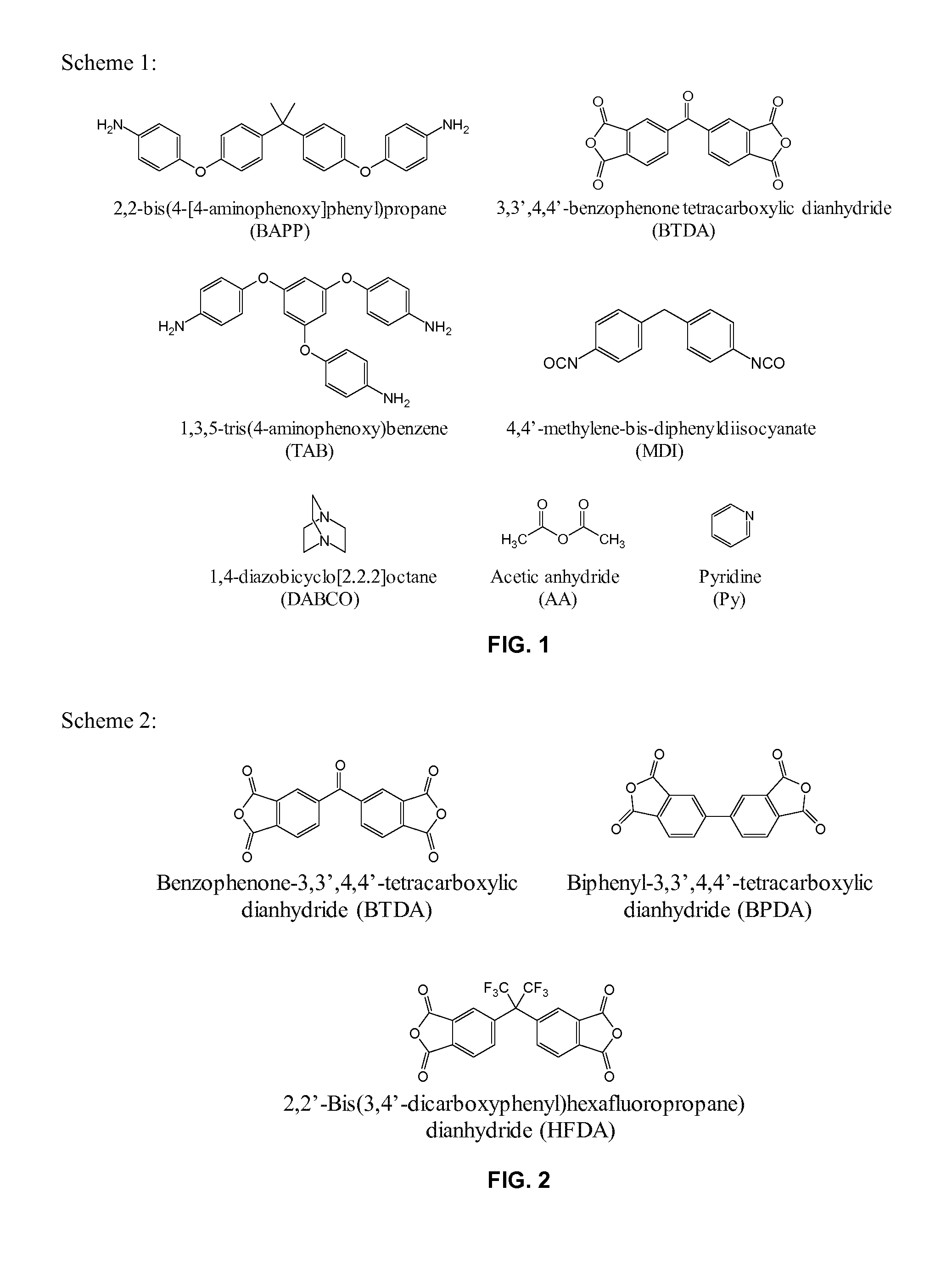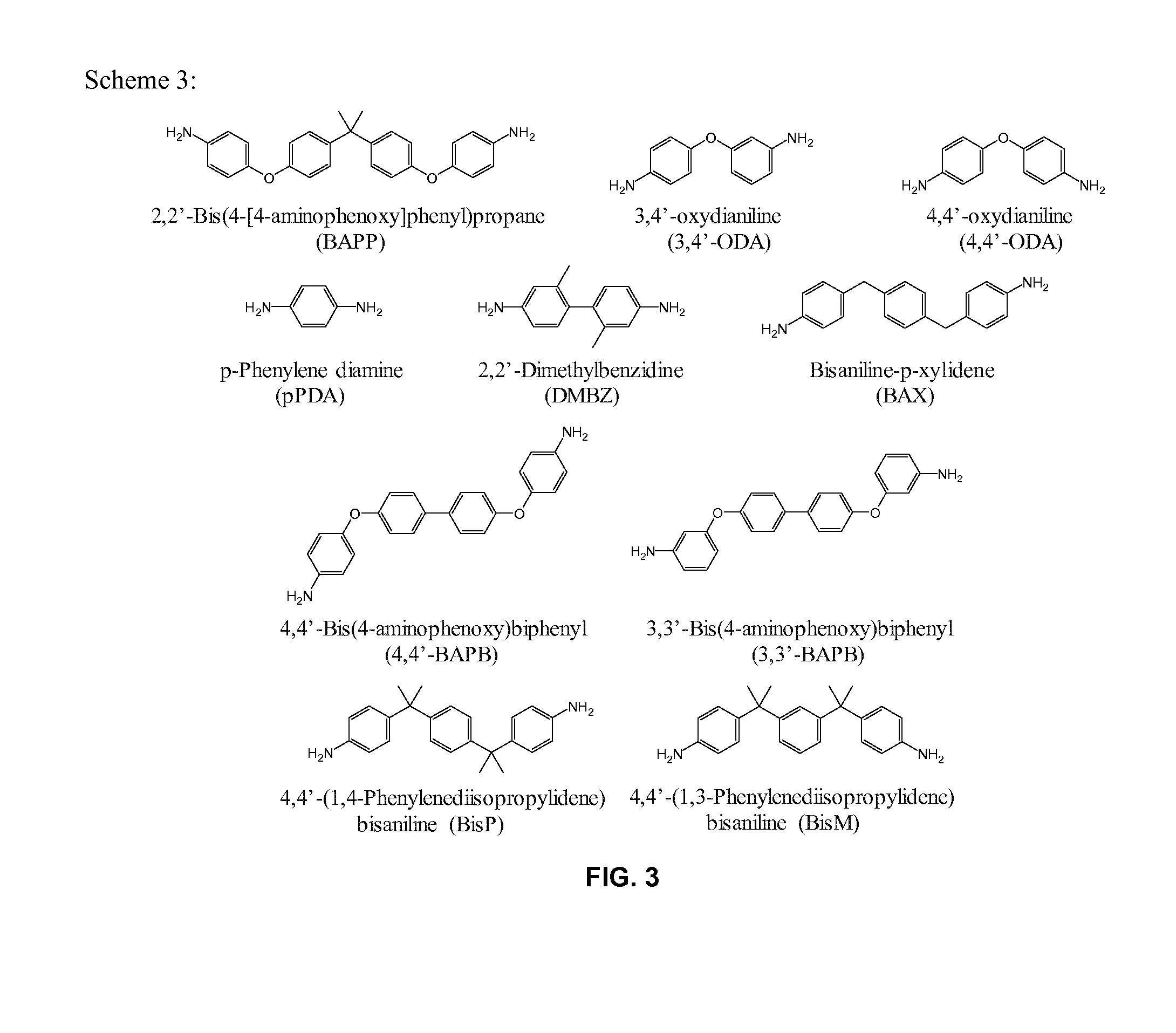Porous cross-linked polyimide-urea networks
a polyimide-urea and cross-linked technology, applied in the field of polyimide-urea networks, can solve the problems of brittle silica aerogels, affecting reducing the effect of abrasion resistance,
- Summary
- Abstract
- Description
- Claims
- Application Information
AI Technical Summary
Benefits of technology
Problems solved by technology
Method used
Image
Examples
example
[0060]Development of porous cross-linked polyimide-urea networks is carried out in this study. Using 1,3,5-tri(4-aminophenoxy)benzene (“TAB”) as a core to generate branching composed of 2,2′-bis[4-(4-aminophenoxy)phenyl]propane (“BAPP”) and 3,3′,4,4′-benzophenone tetracarboxylic dianhydride (“BTDA”), three-dimensional networks were completed with the addition of a diisocyanate, 4,4′-methylene-bis-diphenyldiisocyanate (“MDI”). The urea linkages, formed from reaction of MDI with the amine from BAPP, were to provide additional flexibility in combination with the flexible linkages obtained from BAPP and TAB to the final products. The polyimide-urea (“PI-PU”) aerogels were prepared via both thermal and chemical imidization processes. In the thermal imidization process, amine-capped branched polyimides (“PIs”) were first synthesized, then subsequently cured by MDI. In the chemical imidization reaction, MDI was pre-capped with BAPP, which then further reacted with BTDA, followed by TAB, to...
PUM
| Property | Measurement | Unit |
|---|---|---|
| density | aaaaa | aaaaa |
| porosity | aaaaa | aaaaa |
| Young's modulus | aaaaa | aaaaa |
Abstract
Description
Claims
Application Information
 Login to View More
Login to View More - R&D
- Intellectual Property
- Life Sciences
- Materials
- Tech Scout
- Unparalleled Data Quality
- Higher Quality Content
- 60% Fewer Hallucinations
Browse by: Latest US Patents, China's latest patents, Technical Efficacy Thesaurus, Application Domain, Technology Topic, Popular Technical Reports.
© 2025 PatSnap. All rights reserved.Legal|Privacy policy|Modern Slavery Act Transparency Statement|Sitemap|About US| Contact US: help@patsnap.com



